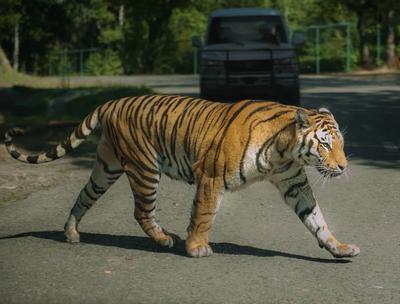Nations are expected to build nearly 15,000 miles of new roads through tiger habitat by mid-century, driven by major infrastructure projects such as China’s Belt and Road Initiative, according to a new analysis published in the journal Science Advances. The study also found that the 83,300 miles of roads that already cross through tiger habitat are decreasing the population and its prey by as much as 20 percent.
The research, led by ecologists at the University of Michigan, examined global road datasets and forecasts for new infrastructure to calculate road density, distance to the nearest road, and species abundance across the tiger’s 450,000-square-mile range in Asia. Just 4,000 tigers exist in the wild today, most of them living in South Asia, where development and population pressures are mounting rapidly.
The scientists found that 43 percent of breeding activity occurs within 3 miles of a road. And 57 percent of land in protected tiger habitats sits within 3 miles of a road. The researchers also found that areas without any formal wildlife protections had road densities 34 percent higher than protected areas, making clear that legal conservation efforts are critical to saving tigers, their prey, and their habitats.
“Tigers face a ubiquitous and mounting threat from road networks across much of their 13-country range,” said Neil Carter, an ecologist at the University of Michigan and lead author of the new study. “Tiger habitats have declined by 40 percent since 2006, underscoring the importance of maintaining roadless areas and resisting road expansion in places where tigers still exist, before it is too late.”



